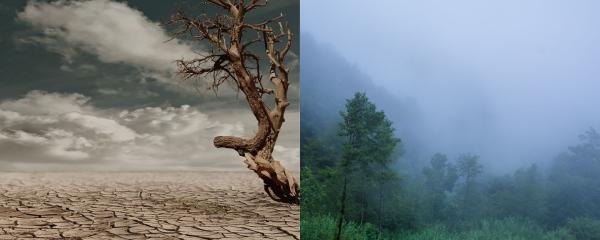
IIT Palakkad study shows how different indices used to predict drought combined with effects fof climate change can lead to different climate predictions for the future

IIT Palakkad study shows how different indices used to predict drought combined with effects fof climate change can lead to different climate predictions for the future
The banks of the river Krishna, an iconic river in South India, is a sight to behold! As you gaze through its vastness, have you ever wondered how the river is, and since when it is flowing? Here is a trivia—the rivers that flow in Karnataka are, in fact, older than the mighty Himalayas!
In a recent article published in the `Science’ magazine, titled ‘When the cure kills—CBD limits biodiversity research’, researchers have questioned the Convention on Biological Diversity (CBD), a framework formulated to conserve biodiversity.
The superbug series: Part 2. The second of a three part series talks about antibiotic resistance showed by disease causing bacteria, its reasons, the problems associated with antibiotic resistance and the severity of the issue in India.
The theme of World Environment Day 2018 is ‘Beat Plastic Pollution’. Take a look at the various efforts made by individuals and organisation to curb this pollution?
23rd of May is celebrated as theWorld Turtle Day. Read about the various organisations in India who use an array of methods to ensure that turtles are welcome on our shores.
Dr. Attreyee Ghosh is a solid earth geophysicist at the Indian Institute of Science, Bangalore, talks about the advancements made in science in the recent years and how these have helped us in understanding our planet better.
According to the World Health Organization, the safe limit of PM2.5 concentration for humans is 25 micrograms/cubic metre. But, the fact that at any given time, the PM2.5 levels in Delhi hover between 303.9 and 408.2 -- way above the safe level -- is no news! Newspaper headlines scream on toxic pollution levels and people wearing protective masks has become a common sight.
Science in India is in interesting times. We have some of the best scientists producing world-class research working in a host of institutions within India that are largely public funded. A large scientific workforce complimented by a promising younger generation – that is often dubbed to be our demographic dividend. A learned and competent scientific administration fighting tooth and nail for increased budgetary allocations to invest in science.
The first of December every year is observed as world AIDS day. It is observed as an effort to unite people world wide in the fight against HIV. The theme for the year 2017 is 'Lets End It', aiming to end the stigma associated with the disease.
How does the 'safe' way of just learning theoretical lessons affect the brain of a child in school? Can touching feeling and playing be effective ways of teahing science? See what Arvind Gupta of Arvind gupta toys, says about how childern can effectively learn science through play.